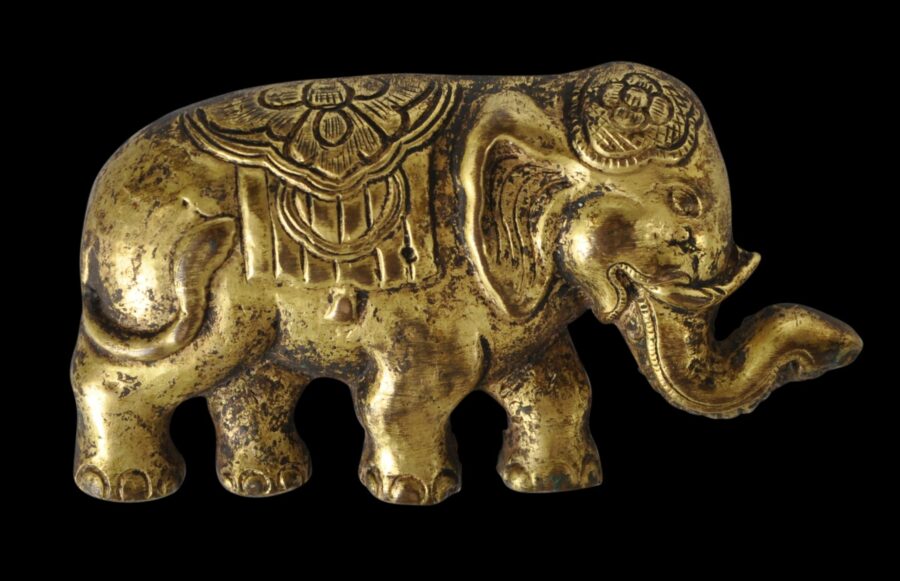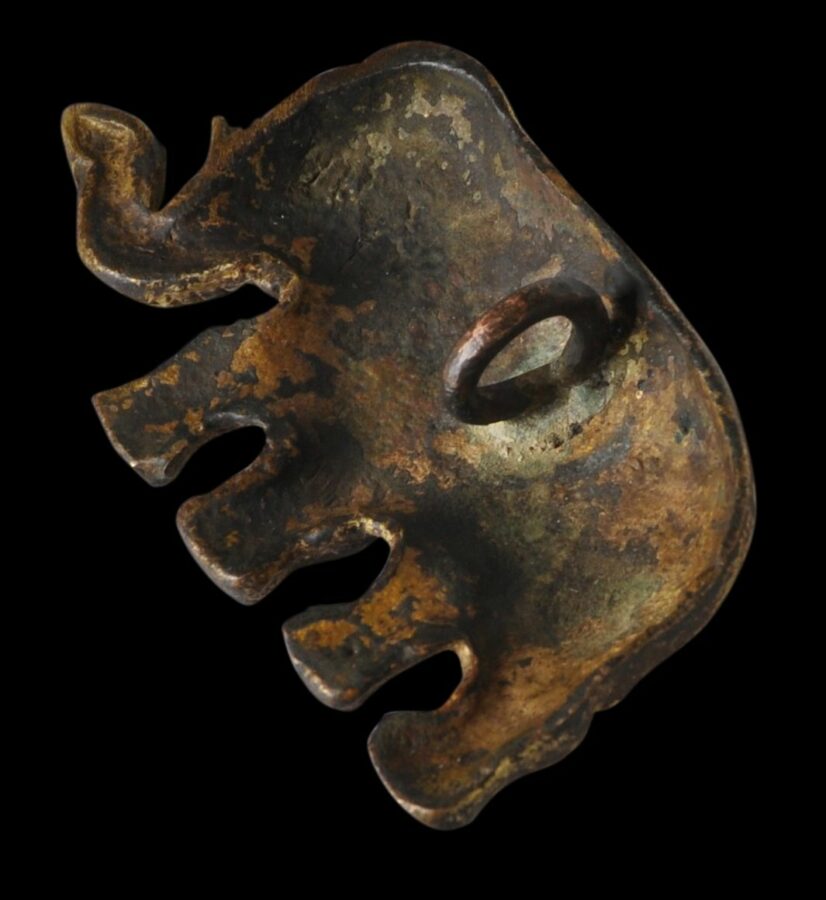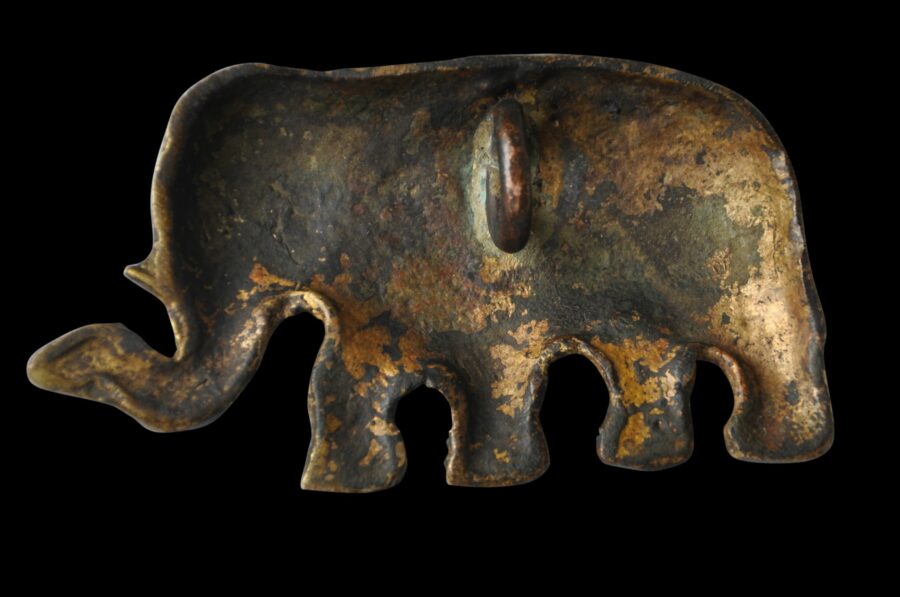This fine gilded bronze representation of an elephant is draped with jewelled cloths. The reverse has a loop to allow it to be attached to a larger item. In this case, it is likely to have been attached to a throne of a deity either in a temple or a monastery.
The elephant in India was associated with sovereignty and so in Tibet came to be associated with Buddha and Buddhism. The elephant also is the vehicle of many Vajrayana Buddhist deities and is most particularly associated with Akshobhya, the blue Buddha of the east of centre. His throne is supported by eight elephants. Elephants also are associated with strength and being unshakeable, so an additional reason for their being associated with kingship.
The example here is in excellent condition.
References
Beer, R., The Encyclopedia of Tibetan Symbols and Motifs, Serindia, 2004.
Heller, A., Tibetan Art: Tracing the Development of Spiritual Ideals and Art in Tibet, 600-2000AD, Jaca Books, 2000.




